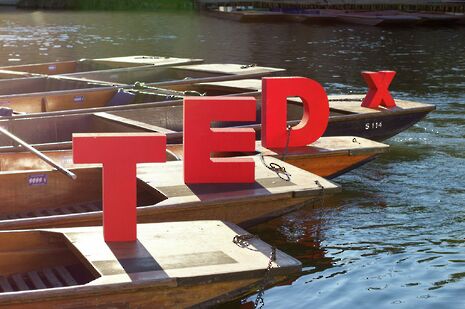TEDx: what does connecting the arts and sciences mean for research?
Sophie Buck believes an interdisciplinary approach can only be beneficial

Connecting the Arts and Sciences is the theme for this year’s TEDxCambridge University event, referring not only to the divide between arts and sciences students but also between their respective disciplines. In a university like Cambridge, the two disciplines are as connected and diverse as the students, and research should be more focused on providing multiple interdisciplinary perspectives of important topics in society today.
I see myself as both an artist and a scientist, trying to understand the world we live in. I feel that making a great distinction between the two areas separates a part of my self. The arts and sciences are, fundamentally, each in search of the same thing: an enhanced understanding of ourselves and the world in which we interact. Scientific results and diagnoses require interpretation; experiments and technology require design. Artistic creation is technical and experimental; arts students spend their time analysing the outcomes of that process. Even something as purely scientific as maths is incredibly artistic: a form of abstraction of reality in order to understand it better.
A greater interdisciplinary approach within research is likely to be beneficial wherever academics’ topics of interest, rather than their formal disciplines, are emphasised, be they rooted in the sciences or arts and humanities. For example, effective research into emotions, a topic still relatively poorly understood, would do well to look at the following: the neurobiology of emotions in the brain and their effect on the body, the portrayal of emotions using metaphors in literature and language, differing historical and cross-cultural representations of emotions, the role of emotions in decision-making, whether emotions can be coded in computers, the potential of the arts to aid in regulating emotions, perceived gender differences in the normality of their expression, and more. All these things tie together and a greater understanding is gained by looking at the same topic or object from multiple perspectives.
Not only is it important that researchers of different disciplines unite within research over a particular topic, but also that a single researcher familiarises themselves with, and utilises, approaches from different disciplines. Interdisciplinary courses are becoming increasingly popular in the USA and now Britain. UCL, for example, has offered from 2011 an interdisciplinary Arts and Sciences course that offers a major and a minor, and focuses on broad topics rather than methods, including pathways in ‘Societies’ and ‘Health and Environment’. Central St Martins, a well-known London art school for those who don’t know, also launched an Art and Science Master’s course in 2013 which seeks to encourage students to work between an art studio and a science laboratory: a ‘labudio’, a term developed by Art-Science pioneers at the University of California. Lastly, the Wellcome Collection, founded in 2007, is also a hugely popular public attraction that explores the connections between medicine, life, and art by way of medical artifacts, original artworks and art-science installations.
I can only hope that the TEDxCambridgeUniversity conference this Saturday calls Cambridge’s attention to the need to reconcile the divide between the arts and sciences and encourage more interdisciplinary approaches. Cambridge is only an hour away from the ‘labudios’ which are springing up in London – surely it’ll be drawn in by the exciting potential of connecting the arts and sciences sooner or later. TEDxCambridgeUniversity 2016 marks a step in the right direction.
 Comment / Plastic pubs: the problem with Cambridge alehouses 5 January 2026
Comment / Plastic pubs: the problem with Cambridge alehouses 5 January 2026 News / SU stops offering student discounts8 January 2026
News / SU stops offering student discounts8 January 2026 News / Uni-linked firms rank among Cambridgeshire’s largest7 January 2026
News / Uni-linked firms rank among Cambridgeshire’s largest7 January 2026 News / New movement ‘Cambridge is Chopped’ launched to fight against hate crime7 January 2026
News / New movement ‘Cambridge is Chopped’ launched to fight against hate crime7 January 2026 News / Cambridge businesses concerned infrastructure delays will hurt growth5 January 2026
News / Cambridge businesses concerned infrastructure delays will hurt growth5 January 2026








